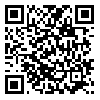Volume 2, Issue 3 And 4 (24 2006)
irje 2006, 2(3 And 4): 1-10 |
Back to browse issues page
Download citation:
BibTeX | RIS | EndNote | Medlars | ProCite | Reference Manager | RefWorks
Send citation to:



BibTeX | RIS | EndNote | Medlars | ProCite | Reference Manager | RefWorks
Send citation to:
Safavi M, Sheikholeslam R, Abdollahi Z, Naghavi M, SadeghianSharif S, Sadeghzadeh E et al . Prevalence of Iron Deficiency Anemia among Iranian Pregnant Women, Spring 2001. irje 2006; 2 (3 and 4) :1-10
URL: http://irje.tums.ac.ir/article-1-175-en.html
URL: http://irje.tums.ac.ir/article-1-175-en.html
M Safavi * 
 1, R Sheikholeslam
1, R Sheikholeslam 
 , Z Abdollahi
, Z Abdollahi 
 , M Naghavi
, M Naghavi 
 , S SadeghianSharif
, S SadeghianSharif 
 , E Sadeghzadeh
, E Sadeghzadeh 
 , S Mohammadian
, S Mohammadian 


 1, R Sheikholeslam
1, R Sheikholeslam 
 , Z Abdollahi
, Z Abdollahi 
 , M Naghavi
, M Naghavi 
 , S SadeghianSharif
, S SadeghianSharif 
 , E Sadeghzadeh
, E Sadeghzadeh 
 , S Mohammadian
, S Mohammadian 

1- , s.m.safavi@usa.com
Abstract: (27414 Views)
Background & Objectives: Iron is a major essential micronutrient during pregnancy and has an important role in intrauterine fetal growth and safe delivery. This survey was designed to study the status of anemia, iron deficiency and iron deficiency anemia in pregnant Iranian women. The results can help health policy-makers with the design and implementation of targeted strategies to overcome these problems.
Methods: This cross-sectional study involved 4368 women at gestational ages ranging from 6 to 9 months. Subjects were drawn through cluster sampling from 11 different regions of the country. Hemoglobin (Hb), hematocrit (Hct), mean corpuscular volume (MCV) and serum ferritin levels were measured and the prevalence of anemia, iron deficiency and iron deficiency anemia (IDA) was determined both nationwide and separately in each region.
Results: Overall, 21.5% of the women suffered from anemia 42.7% were iron deficient and the prevalence of IDA was found to be 10.4%. The prevalence of anemia s was significantly greater in rural areas than in urban settings (22.2- 27.8% compared to 17.1 -21.6%, 95%CI). The highest prevalence of anemia and low Hct was seen in the women of region 5 (including Sistan and Baluchistan, South Kerman and South Khorasan with rates of 44.2% and 40.5% respectively). Region 6 (covering Isfahan, Yazd, Kohkilooyeh-Boyerahmad and North Kerman) had the lowest prevalence of anemia and low Hct (9% and 10.8% respectively). Use of iron supplements (even irregular) had a positive effect in reducing anemia. It affected Hct levels only when taken regularly.
Conclusions: Anemia is still a major health issue for pregnant Iranian women. Although supplementation should be continued, there is a need for more comprehensive interventions addressing all target groups, especially women of child-bearing age.
Methods: This cross-sectional study involved 4368 women at gestational ages ranging from 6 to 9 months. Subjects were drawn through cluster sampling from 11 different regions of the country. Hemoglobin (Hb), hematocrit (Hct), mean corpuscular volume (MCV) and serum ferritin levels were measured and the prevalence of anemia, iron deficiency and iron deficiency anemia (IDA) was determined both nationwide and separately in each region.
Results: Overall, 21.5% of the women suffered from anemia 42.7% were iron deficient and the prevalence of IDA was found to be 10.4%. The prevalence of anemia s was significantly greater in rural areas than in urban settings (22.2- 27.8% compared to 17.1 -21.6%, 95%CI). The highest prevalence of anemia and low Hct was seen in the women of region 5 (including Sistan and Baluchistan, South Kerman and South Khorasan with rates of 44.2% and 40.5% respectively). Region 6 (covering Isfahan, Yazd, Kohkilooyeh-Boyerahmad and North Kerman) had the lowest prevalence of anemia and low Hct (9% and 10.8% respectively). Use of iron supplements (even irregular) had a positive effect in reducing anemia. It affected Hct levels only when taken regularly.
Conclusions: Anemia is still a major health issue for pregnant Iranian women. Although supplementation should be continued, there is a need for more comprehensive interventions addressing all target groups, especially women of child-bearing age.
Type of Study: Research |
Subject:
General
Received: 2006/08/15 | Accepted: 2007/04/9 | Published: 2013/09/18
Received: 2006/08/15 | Accepted: 2007/04/9 | Published: 2013/09/18
Send email to the article author
| Rights and permissions | |
 |
This work is licensed under a Creative Commons Attribution-NonCommercial 4.0 International License. |



